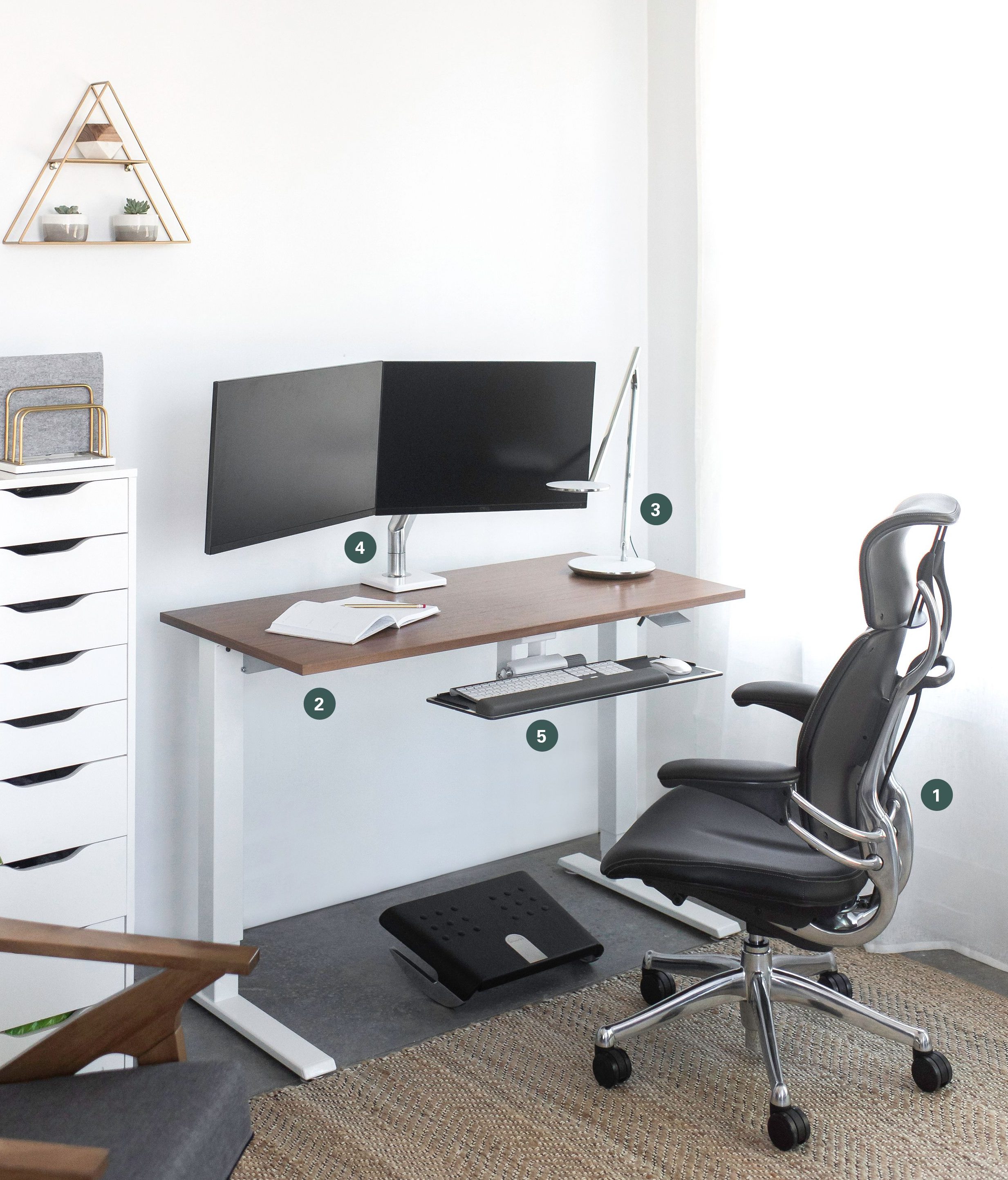by Brianna Crandall — December 16, 2019 — An ideal workstation is about more than just a good chair or desk, points out ergonomic products manufacturer Humanscale. There are a number of key factors to look out for to ensure a workstation is functional and adaptable, as well as comfortable and healthy for the user.

Humanscale lists 5 key factors to ensure a workstation is functional and adaptable, as well as comfortable and healthy for the user. Image courtesy Humanscale
In the business of making well-designed ergonomic tools for the workspace for over 35 years, Humanscale and its team of certified ergonomists have prepared the following checklist to create a better workstation, fit for the home or corporate office.
Five essentials for the “perfect” workstation
1/ The Chair
“A good task chair can provide you with the best possible foundation to create great work,” says Johnathan Puleio, a certified ergonomist and Global VP of Consulting for Humanscale.
Puleio suggests looking for a chair that automatically adjusts to the sitter so they don’t need to fumble with confusing knobs and levers to be comfortable as they change tasks and positions throughout the day. Any adjustments that aren’t automatic, such as height and armrest height, should be easy and intuitive.
2/ The Desk
For decades, office furniture was designed to be stationary, and people were required to adjust their physical positions around the tools in their workstation. Ergonomists now know that it’s important for people to be able to move freely throughout the day, alternating between sitting and standing postures with ease, in order to be healthy, comfortable and focused at work.
Furniture should adjust to the professional using it, not the other way around. Whether freestanding or on top of a fixed desk, a good sit/stand workstation should be simple, intuitive and easy to use, so if a person needs to stand or sit while working, the process of raising or lowering the desk is seamless.
3/ The Task Light
Natural light in the workplace is widely recognized as a positive influence on productivity, creativity, and mood, but is just one of many light sources needed to fully address well-being at work. With the rise of backlit screens and open floor plans, task lighting, as a supplement to natural or overhead lighting, is necessary for an optimal work experience.
“To avoid ocular discomfort that can negatively impact one’s performance as well as their overall health and well-being, it’s important to find proper task lighting that casts a wide footprint, is glare-free and offers a single shadow, and that is smooth and easy to adjust as needs shift throughout the day,” says Puleio.
4/ The Monitor Arm
Though often overlooked, monitor arms promote a clutter-free workspace and support a healthier, more ergonomic working posture, making it a must-have for the ideal desk setup. Many professionals tend to lean in toward their computer monitor in order to see it better, whereas monitor arms enable them to pull the monitor closer so they can sit in a healthy posture, with their back against the back of the task chair, and still see the work on their screen.
Users are encouraged to align the monitor at the correct height for them, which helps to prevent eye and neck strain. Monitor arms are also key for professionals that utilize multiple monitors to manage their work.
5/ The Keyboard Tray
A keyboard tray is another vital tool that helps achieve an adapting, ergonomic workspace. This underrated tool brings the keyboard and mouse closer and encourages professionals to sit in a healthy, neutral posture without leaning forward.
A well-designed keyboard tray offers protection from carpal tunnel syndrome, neck and back pain and other musculoskeletal issues. Other ergonomic tools including Humanscale’s NeatTech, NeatUp and NeatLink help to keep the desktop clear of cables and clutter.
To view the complete checklist as well as information on Humanscale’s ergonomic solutions, visit the company’s website.





